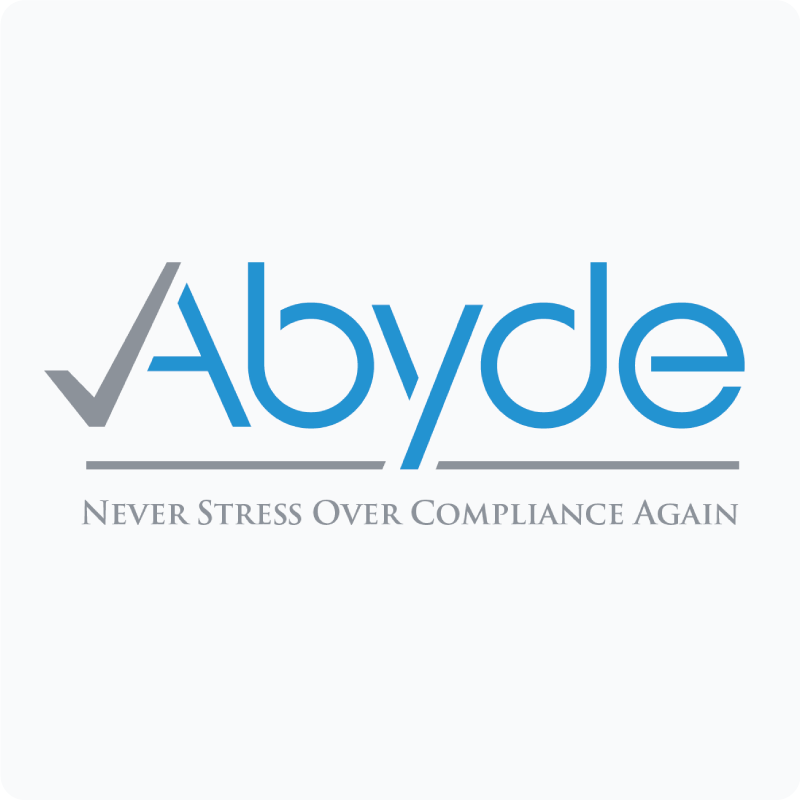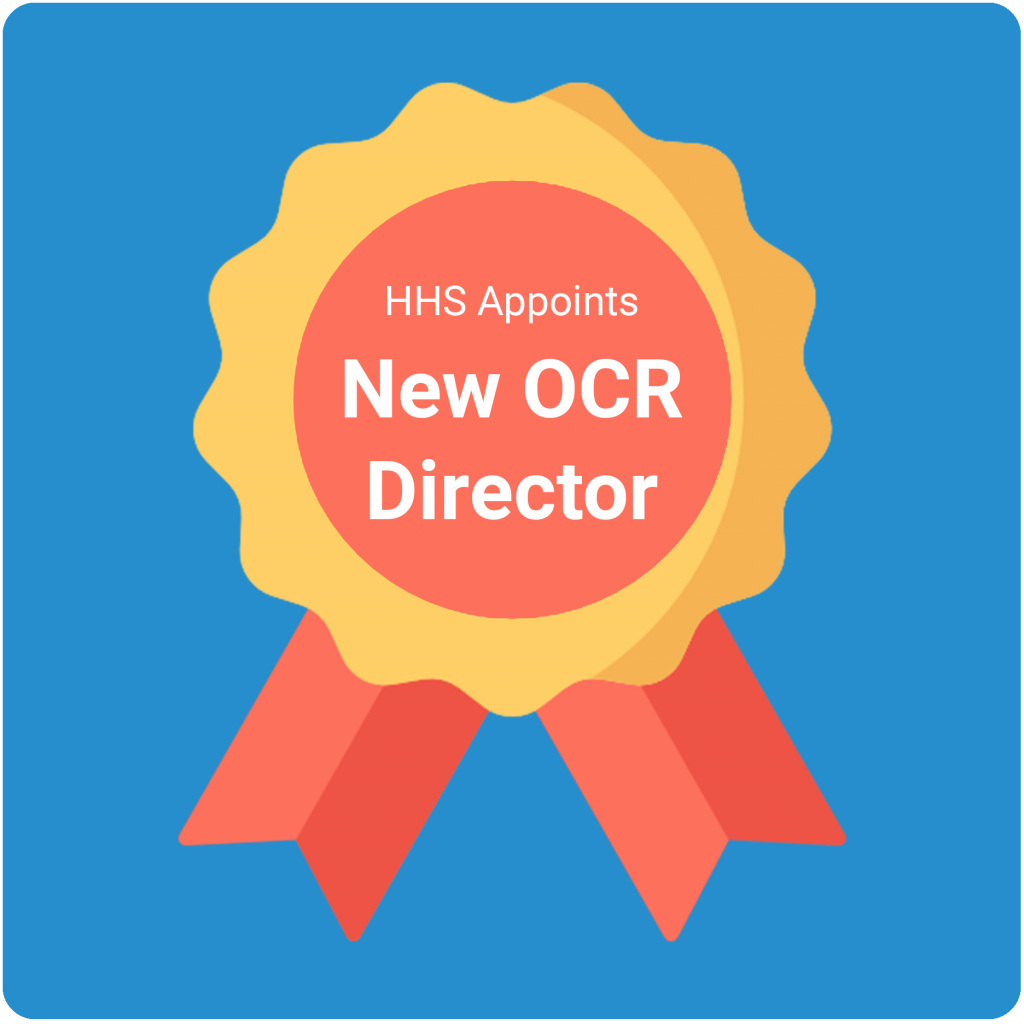October 13, 2022 Do you get surprised and frustrated when policies change? How about when your bill was more expensive than you originally thought? We can relate. The North Carolina Department of Labor increased state OSHA penalties and investigations to match current Federal OSHA standards through the Appropriations Act. Starting October 1st, fines will increase and follow the same pattern every January 1st. Prior to this change, if a practice was fined the maximum under NC OSHA the cost to the practice would be: Wow, that’s a lot of dough – and we’re not talking about the pizza or cookie kind! And if you though that was expensive, here is what a violation will cost now: Notice anything special about the fines above? Some can be “per day”. We all know time is money and there’s no exception when it comes to OSHA. Not only are the penalties changing, but the time frame to issue citations is as well. Previously, citations could be levied up to six months from initial reporting. Also being implemented on October 1st, NC OSHA has six months from the first inspection to levy a citation, not from initial reporting like before. Don’t get me wrong – we love a good limbo at a party, but not when it comes to OSHA citations! The famous Pablo Piccaso said, “Action is the foundational key for all success”. With North Carolina amending a few OSHA policies, take the time to educate yourself to avoid any costly violations.
Abyde Launches OSHA Software Solution for Healthcare Practices Nationwide
October 13, 2022 Industry-leading compliance solution provider, Abyde, today announces the launching of OSHA for Healthcare – a revolutionary software to complement their existing HIPAA solution. Abyde’s OSHA for Healthcare offers practices of any size to easily implement and sustain a compliance program that meets federal government regulatory requirements. Built by industry veterans and experienced developers, the software mimics the ease of use that customers have come to expect with the existing Abyde HIPAA platform. OSHA for Healthcare is available to all independent practices across the nation including, but not limited to: dental, eye care, chiropractic, and dermatology. This one-of-a-kind solution was designed to alleviate the stress of managing a complex compliance program in-house, while simultaneously providing real-time support from a team of experts and educational resources that go beyond the software. The software encompasses components such as Facility Risk Assessment, custom policy generation, complete employee training, safety and health logs, and more. “We have always had larger visions for Abyde beyond HIPAA compliance so we are ecstatic about launching our revolutionary OSHA compliance solution”, said Matt DiBlasi, Abyde President. “Our main objective for OSHA was to keep the simplicity and ease of use that has made Abyde the industry leader over the last 6 years. To say we’ve ‘nailed it‘ might be an understatement. We are so proud of all the hard work that went into creating such a uniquely better platform and we can’t wait for providers and staff to get their hands on it!” Demos of OSHA for Healthcare and educational consultations are currently available to all practice types. If you are an existing Abyde user, schedule a demo of the software here or an educational consultation here. For all those who are not current Abyde users, please schedule here.
OSHA Inspection Process & Budget
October 11, 2022 With all of the OSHA inspections that are conducted throughout all the major sectors, you would be surprised to find out that the healthcare industry makes up 12% of those inspections! With the total average number of OSHA inspections leaning towards 34,000 a year – 14,000 of those inspections are related to the healthcare industry alone. You may be thinking to yourself how does the whole OSHA inspection process work? Well, you are in luck! Let’s get into the nitty gritty of it all. Anyone who is covered by the Occupational Safety and Health Act has the ability to request an OSHA inspection, or OSHA could also make an unrequested inspection. If and when an inspection is conducted, it is typically done with no notice at all – talk about an uninvited guest! For the inspection itself, it will include an opening conference, “walkaround” of the workplace, and a closing conference. The opening conference will begin once the inspector arrives and meets with the representatives. This part of the inspection is to be as short as possible and ensures that the inspection will cover all hazards that were mentioned in the complaint. After the opening conference, the inspector will conduct what’s called the “walkaround”. This is where the inspector and any representatives will check the facility for any safety and health hazards that were included in the initial complaint. The inspector could potentially check for any other hazards if they choose. The inspector would speak with any affected employees and employees are encouraged to point out any hazards and mention any past accidents, illnesses, and employee complaints. During the initial walkaround, the inspector may use any equipment to measure noise, dust, fumes or any other hazardous exposure. If you are unsure of what they are doing, don’t be afraid to ask. After the walkaround is complete, the OSHA inspector will bring any violations to the attention of the employer and employee representatives at the time they were discovered. Last thing is the closing conference, where the OSHA inspector where the OSHA inspector has to conduct a closing conference, whether it is jointly or separately, and will go over any apparent violations, ways to correct them, deadlines, and potential fines. And that wraps it up! Phew! Now let’s talk about MONEY! Every year OSHA introduces a plan and budget to substantiate their existence. In August, the Senate proposed an 11.1% funding increase for OSHA in the fiscal year of 2023. The Department of Labor, HHS, Education and Related Agencies Appropriations Act of 2023 proposes $679.8 million for OSHA in 2023, which is $68 million more than 2022. There is a House funding bill as well that proposes $712 million for OSHA; if the finalized budget is passed the amount would fall somewhere in between the two amounts that were proposed. With all that being said, having a larger budget could mean hiring more inspectors who could potentially knock on your door! Now that you’re familiar with the inspection process, wouldn’t it be nice to know you can be confident in your practice’s OSHA program? In walks Abyde – and we are a guest that usually brings doughnuts when we walk through your door!
Optometrists Need OSHA too!
October 11, 2022 “Why should I be concerned about OSHA? I’ve never heard anything about OSHA and vision clinics?”- an actual Abyde customer Optometrists can feel the sting from OSHA, but it isn’t a sting like getting shampoo in your eye that goes away after washing it out. It’s a financial sting, much like cutting a jalapeno and wiping your eye, and requires a more serious treatment method. OSHA is ramping up their staffing, and holding their regulations to the highest standards we’ve seen yet. Sure, when you put OSHA into your search bar you see hardhats and bright green vests, it doesn’t look like it applies to you. We are here to tell you no one is exempt from regulations unless specifically stated. We have done our research, we see the importance for our customers, and now it’s time to educate on why it applies to Optometry. Optometrists and their staff always use best practices in wiping down the chin and head strap before sending that always anticipated, but yet startling ‘puff’ to the eyeball. When sitting in the big chair and ready to use the machine that has patients looking like Dr. Robotnik, they always clean it beforehand. But, what may not be recognized is that the cleaning solution used in best practice, is required to be logged and updated under OSHA Standards. Let’s not forget about the education Optometrists give patients on the benefits of getting eyes dilated. When patients consent to wearing the cool disposable sunglasses, the Doctor’s responsibility is to have OSHA approved regulations in place while using the chemical. This includes but is not limited to having it logged in the Safety Data Sheet (SDS), but also making sure all staff is trained on usage to avoid any injuries. Documenting your hazardous chemicals and training staff for implementation, is part of the real definition of best practice according to us here at Abyde, and we of course give you everything you need to do so. While patients may need eye drops for getting shampoo in the eye, they won’t be getting any eye diseases that an Optometrist needs to treat. However, while treating eye diseases, OSHA standards for Exposure Control are required to be followed. That includes any bacteria, bloodborne pathogens, and maintaining proper protection is key! Let’s not forget the hazardous chemicals you’re using for treatment. Now that we’ve gone full circle, we haven’t even started the race on OSHA importance in Optometry. So, to answer the Abyde customer(s) who are wondering why they should be concerned about OSHA, we have much more education available for all of our Optometrists! Knowledge is power, (and in this case, a money saver), y’all.
Kickstart your OSHA Compliance Program with a Facility Risk Assessment
October 11, 2022 If you are familiar with OSHA compliance, you may know that you need to complete a Facility Risk Assessment, otherwise known as a Workplace Hazard Assessment. Tomato, toe-mat-oh, right? Despite the differing names, it’s important to know that this assessment helps your organization to identify, minimize and eliminate hazards in the workplace with the goal of providing a safe and healthful work environment for all employees. Think of your Facility Risk Assessment (FRA) as the meat and potatoes of your entire OSHA compliance program. This is a baseline survey of all the hazards in your workplace. Without properly identifying, and more importantly, documenting all hazards within your organization, you cannot move forward with the rest of your OSHA compliance program and cannot show that there is a culture of compliance within your organization. Additionally, in the case of an investigation, the FRA is going to be the first thing the government asks for, so that is why it is so important it is completed first. What kind of questions does your FRA need to include? Just as there is not a single recipe for a savory steak and potato meal, there is no single checklist to follow when it comes to completing a Risk Assessment for your organization. However, OSHA does recommend incorporating 7 core elements as part of your Facility Risk Assessment: Once you have completed your Facility Risk Assessment, you should not tuck it into a folder and forget about it. Your FRA must be reviewed periodically to ensure that it is up to date and accurately reflects all processes and controls within your organization. It’s also important to keep in mind that all employees should be involved in the process of mitigating hazards identified from your FRA. What’s the best way to tackle a Facility Risk Assessment? If your organization has not completed an FRA before or if you have but not sure if it was thorough, using an outside organization will help to ensure all areas of the FRA are fully completed and documented accordingly. A third party can also help add new areas and questions into the FRA that reflect changing regulations. Are you looking for help kickstarting your OSHA compliance program? Reach out to Abyde today for a customized, easy to complete FRA that is tailored to you and your organization.
Internal Communication Dos and Don’ts
October 6, 2022 Have you ever accidentally sent a text to the wrong person? Most of us have and it likely made your heart skip a beat! Now, imagine sending a text and thousands of patients’ health information gets leaked. Talk about a gut-wrenching moment! Speaking of leaks, did you know that over 1.14 million people have been impacted by a protected health information (PHI) breach just last month alone? The leaked data includes names, social security numbers, phone numbers, email addresses, and more. That’s 7% higher than last September! Internal communications are an efficient means of sharing and exchanging information within the practice. Employees communicate internally through channels like SMS, email, phone calls, and other means through the use of a third-party platform like Slack, Microsoft Teams, Zoom, and Cisco Webex. And while oftentimes we like the thought of quick and easy, it’s crucial to take that extra minute or two and double check that you are using a secure provider for all internal communication. First things first, if you haven’t already done so, take this as your sign to reach out to your communications provider and ask if they are HIPAA compliant. Many times, companies will have this information available on their website as well. Keep in mind that some providers, like Google and Microsoft, offer HIPAA compliant services in an upgraded package. If you are not using a secure platform, or you are unsure, then you should not be discussing ANY patient information through that method of communication (yes, that includes names!). If you are using a secure, HIPAA compliant provider or application for internal communication, great! The next very important step is to double check that you have a signed Business Associate Agreement. You may also be wondering about SMS/ text messaging within your organization. Staff members should not be texting each other with information related to patients, even if it is related to scheduling. Keep all work-related communication through your secure provider or application. Quick reminder! Just because you are communicating internally through a secure provider does not in fact mean you are compliant. You’ll also need to implement security policies and procedures in order to follow best practices. These policies and procedures should include: It is highly recommended that you consult with your IT professional for best practices on securing all applications in your practice. Lastly, It’s important to remember that HIPAA is not a barrier law and, in fact, is intended to help you share protected health information securely and efficiently. Being efficient within your practice can help the overall health of your patients and your organization. Having these best practices in place will help you and your team avoid the anxiety of sharing something that shouldn’t be shared.
OCR Settles Three Cases with Dental Practices for Patient Right of Access under HIPAA
September 21, 2022 Boom! Pow! Bang! Three dental practices were sacked yesterday, resulting in nasty bruises and a loss of yards on the play. After heading into the locker room and studying some film, they recognized there were some lessons to be learned in the OCR’s HIPAA Right of Access playbook. The U.S. Department of Health and Human Services (HHS) Office for Civil Rights (OCR) announced the completion of three investigations in its Health Insurance Portability and Accountability Act (HIPAA) Right of Access Initiative. The OCR’s HIPAA Right of Access Initiative started in 2019 to ensure patients receive their records in a timely and costly manner. With three actions in one day and a total of 20 just this year, we are seeing a 42% increase year over year in the enforcement of the Privacy Rule. The OCR’s effort has now raised the total to 41 Right of Access actions across the span of 3 years, setting a strong example for practices across the country on the importance of maintaining compliance. OCR Director, Melanie Fontes Rainer, states, “Patients have a fundamental right under HIPAA to receive their requested medical records, in most cases, within 30 days. I hope that these actions send the message of compliance so that patients do not have to file a complaint with OCR to have their medical records requests fulfilled.” Here is an instant replay of when three dental practices crossed the line of scrimmage: The first dental practice had a delay of game penalty after failing to provide timely access to their former patient’s records. The former patient didn’t receive a complete copy of their records until October 2020, five months after they filed a complaint back in May 2020. This resulted in a $30,000 settlement and the implementation of a Corrective Action Plan. The second dental practice got a 15-yard penalty for not providing a patient with a copy of her records in a timely or costly manner. The practice refused to provide the records because the patient wouldn’t pay the $170 copying fee. That’s not a fair catch! After the OCR got involved, the dental practice had to cough up $80,000 in settlement and adopt a Corrective Action Plan. Maybe they should’ve read the HIPAA Rule book! The starting running back fumbled the ball when this practice failed to provide a mother and her son with copies of their PHI until after the play clock hit zero. After multiple requests and eight months of waiting, she finally got the medical records in her hands. The dental practice had to fork over $25,000 and implement a Corrective Action Plan. After watching the game footage, there is a clear solution here! Make sure your practice provides patients with timely and costly access to their medical records. Six dental practices have been sacked so far in 2022, which means we have already witnessed a 600% increase solely in the dental space compared to the 2021 season. That is not a statistic you can ignore! You could be next, so we encourage you to make sure you have the right compliance measures in place to avoid these large fines. Is your game plan ready?
The Department of Health and Human Services Appoints Melanie Fontes Rainer as the New Office for Civil Rights Director
September 19, 2022 Did you check the news??? There’s a new sheriff in town and her name is Melanie Fontes Rainer! Recently announced, the Department of Health and Human Services (HHS) has appointed former Acting Director, Melanie Fontes Rainer, as the new Director of the Office for Civil Rights (OCR). Fontes Rainer has extensive experience in her career, serving as an Acting Director for the OCR and before that Counselor to Secretary Becerra. Secretary Becerra stated, “Melanie has devoted her entire professional career to public service and has worked tirelessly to ensure that health care is accessible, affordable, and available to all, no matter where you live or who you are.” Fontes Rainer brings over 10 years of experience in civil rights, healthcare policy, and patient privacy. She was also involved in the 21st Century Cures Act, the Affordable Care Act, and the No Suprise Act. Fontes Rainer took part in ground-breaking settlements and created the first office that focused on health care rights and access in California. Melanie’s background, combined with her passion, will prepare her for the challenges she will face in her new role as OCR Director. It is important to take into account that after Lisa J. Pino, former OCR Director, was appointed last year, we saw a surge in enforcement cases right away. Only a few months into Pino’s appointment as director, the OCR announced five Right of Access settlements in one day. This year we have already seen 17 including a record-breaking day with 11 settlements announced in just one day alone. With settlements totaling $1,992,140 already in 2022, the OCR clearly isn’t done yet. As we can see, between HIPAA violations, cybersecurity issues, and personal information privacy, practices continue to face challenges this year. But we can also see that Fontes Rainer is here to help, bringing years of expertise and fiery passion to the table. She enforces healthcare regulations, promotes healthy practice operations, and protects patient health information across the country. With years of dedication to civil rights and medical privacy, we can definitely expect to see a lot of settlements surfacing with Fontes Rainer in town.
OCR Settles Case Concerning Improper Disposal of Protected Health Information
August 24, 2022 When it’s time to clean out and organize that ole garage, you probably want to take time to make sure all your sensitive and sentimental items – files, photographs, etc. – are in the right spot before taking them to the dump. It should be no different when it comes to disposing of old devices or hard drives at the office that contain sensitive ePHI, yet practices continue to fail. In recent news, the OCR announced a settlement for a dermatology practice located in Massachusetts that failed to properly dispose of protected health information. As a result, the dermatology practice agreed to pay the hefty fine of $300,640 to the OCR and implement a Corrective Action Plan to resolve the investigation. It may be obvious that paper records require proper disposal – in most cases, shredding or recycling – so that the information cannot be read by the wrong parties. Despite this being common practice, the Massachusetts dermatology practice had PHI that was exposed. Improper disposal is even more common when it comes to disposing of electronic protected health information (ePHI) properly. It is critical that your practice understands how and where to dispose of PHI. But what exactly constitutes proper digital data disposal? Disposing of your PHI is not as simple as clicking the delete or trash button. If you do not completely delete these files from your devices, they can be recovered using high-tech software. The following are some thorough methods for properly disposing of PHI: There are lots of devices that could have been used to store PHI even though you would never realize they do. These devices include: Before you burn those electronic devices in a campfire, remember that HIPAA requires practices to keep PHI for at least 6 years, and maybe longer depending on your state. Devices containing data that is older than six years should be backed up before being wiped clean, and data should be encrypted while being kept. At the end of the day, whether it is boxes of important documents in your garage at home or PHI at your very own practice, it is critical to dispose of it properly and safely.
PROPS Center and Abyde partner to deliver HIPAA and OSHA compliance to dental practices
August 23, 2022 Industry-leading compliance solution provider, Abyde, announces its latest partnership with PROPS Center, offering a complete user-friendly compliance software solution to PROPS Center’s customers. The collaboration between Abyde and PROPS Center opens the door to assist PROPS Center customers with implementing easier compliance practices. By adding the combo of Abyde’s HIPAA and OSHA solutions to PROPS Center’s one-stop shop, customers will have access to more resources to enable them to focus on their patients. The partnership will assist Connecticut dental offices by meeting compliance standards, better securing their patients’ health data, establishing an overall business baseline for practices and setting safety and health standards for policies and procedures. Abyde’s new approach to HIPAA and OSHA compliance assists practices through necessary compliance standards such as the Security Risk Analysis (HIPAA), a Facility Risk Assessment (OSHA), training for doctors and employees, keeping track of safety and health with logs, managing Business Associate Agreements, dynamically generated policies and much more. As industry leaders, the software provides practices with the tools and assistance they need to achieve stress-free compliance. “We are thrilled to have PROPS Center join our partner network and be among the first to adopt our OSHA solution,” stated Matt DiBlasi, President of Abyde. “Given the importance of OSHA and HIPAA in the dentistry profession, putting the two together sets any practice up to dominate compliance. We look forward to sharing our knowledge and solution with PROPS Center customers for many years to come!” “PROPS Center is very excited to begin our strategic partnership with Abyde. This collaboration gives Connecticut oral health professionals the ability to protect their practices and be HIPAA and OSHA compliant,” said Kathlene Gerrity, Executive Director of The PROPS Center. About Abyde Abyde (Tampa, FL) is a technology company dedicated to revolutionizing compliance for medical professionals. Launched in January 2017, Abyde was formed with the idea that there could exist an easier, more cost-effective way for healthcare providers to comply with government-mandated HIPAA regulations. Since then, Abyde has recently launched our OSHA solution and is working hard every day to deliver the perfect compliance solution! For more information on Abyde visit abyde.com. About PROPS Center The PROPS Center was designed specifically to help small businesses adapt to the new environment that exists since COVID-19 ravaged our world. The landscape for businesses is vastly different – inflation, supply chain issues, work force shortages and increasing pressure to operate more effectively and efficiently. When you are trying to focus on your core business – whether that be healthcare or another sector – the details of running a business can detract from time spent with your patients, clients, customers. PROPS Center is here to support businesses by saving you that most valuable resource: your time. We have done the research, vetted the partners, worked the deals to get you the best possible products and services at a great price point. Our goal is to enable you to achieve maximum efficiency, reduce margins and find resources that will be responsive when you need them. Watch this site and follow us on social media because new partners are added regularly. We are excited to help you get back to work, and bring you confidence and peace of mind in finding smart solution to your business’ needs. And our ultimate goal is to save you time, ensure quality, and achieve that elusive work/life balance. Let us know how we are doing! Want a product or service not here? Please tell us. Looking for a better option in a specific category? Suggestions welcome! Frustrated by a service? We’d like to know. Thank you for taking a look at the PROPS Center and utilizing the services offered by our growing roster of partners. Read the full press release here.









